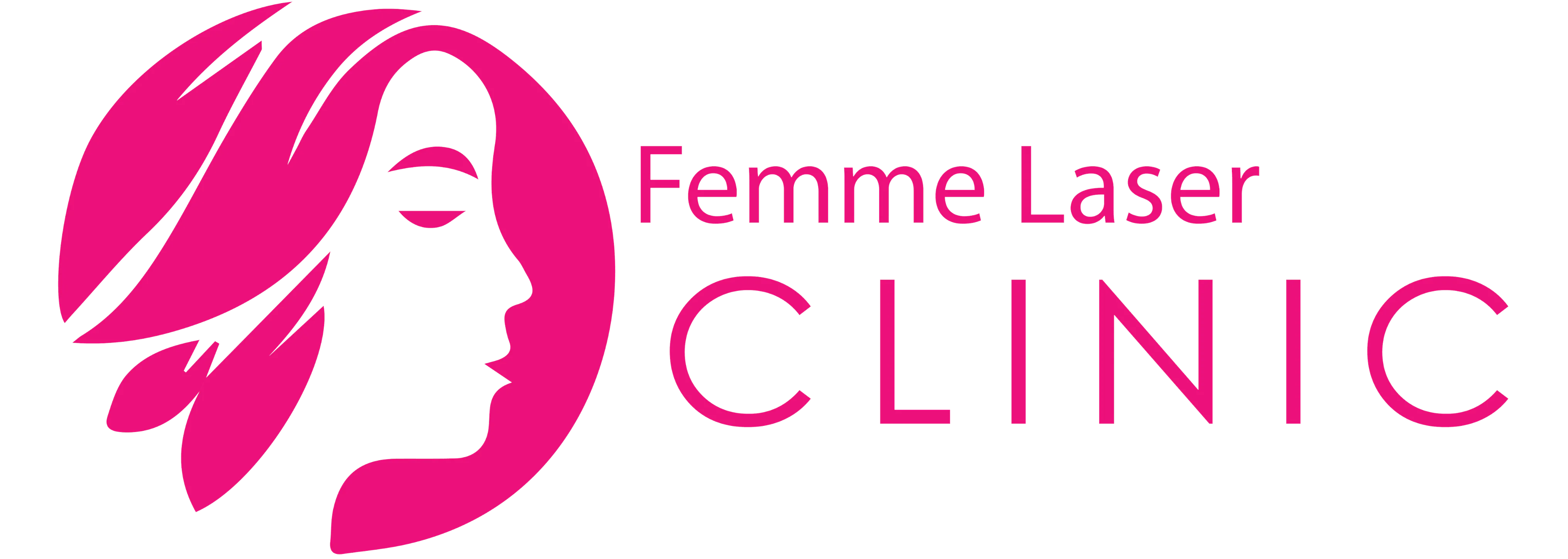Laser hair removal is a popular cosmetic procedure for permanent hair reduction. It uses concentrated beams of light to target the hair follicles, destroying them and preventing future hair growth. This procedure is highly effective and offers long-lasting results, making it a preferred choice for those seeking a hair-free lifestyle. Laser hair removal works by …
Laser hair removal is a popular cosmetic procedure for permanent hair reduction. It uses concentrated beams of light to target the hair follicles, destroying them and preventing future hair growth. This procedure is highly effective and offers long-lasting results, making it a preferred choice for those seeking a hair-free lifestyle.
Laser hair removal works by targeting the pigment in the hair follicles, which absorbs the laser energy and damages the follicle. As a result, the hair growth cycle is disrupted, leading to reduced and eventually no hair growth in the treated area. The benefits of laser hair removal include permanent hair reduction, precision in targeting specific areas, and minimal discomfort.
There are four types of lasers used for hair removal, including:
- Alexandrite
- Diode
- Nd:YAG
- IPL (Intense Pulsed Light)
These lasers differ in their wavelengths and are suitable for different skin and hair types. The number of sessions needed for laser hair removal varies depending on several factors, such as hair thickness, skin type, and the treated area. On average, most people require 6-8 sessions for permanent hair reduction.
Factors that affect the number of sessions needed include the thickness and color of hair, skin tone, and hormonal imbalances. It is essential to prepare for laser hair removal by avoiding sun exposure and certain medications before treatment. The procedure may cause temporary side effects such as redness, swelling, and itching, but these usually subside within a few hours or days. To maintain results, it is crucial to follow proper aftercare, including avoiding sun exposure and using sunscreen regularly.
In conclusion, laser hair removal is a safe, long-lasting, and effective solution for permanent hair reduction. The number of sessions needed varies depending on individual factors, and proper preparation and aftercare are essential for optimal results. Consultation with a licensed and experienced practitioner is recommended to determine the most suitable treatment plan for your specific needs.
Table of Contents
ToggleWhat is Laser Hair Removal?
Laser hair removal is a cosmetic procedure that utilizes a concentrated beam of light (laser) to eliminate unwanted hair. This procedure targets the pigment in the hair, damaging the follicle and preventing future hair growth. It is a highly effective and long-term solution for reducing hair growth on different areas of the body.
The idea of using lasers for hair removal was initially introduced in the mid-1990s and has since been refined with technological advancements and safety protocols.
How Does Laser Hair Removal Work?
Laser hair removal is a process that works by targeting the hair follicles with concentrated light beams, which are absorbed by the pigment in the follicles and effectively destroy the hair. The steps involved in the process typically include the following:
- Cleansing the area to be treated.
- Marking the area to be treated to guide the laser.
- Applying a cooling gel to protect the skin and aid in the penetration of the laser into the hair follicles.
- Using the laser to target the hair follicles by emitting pulses of laser light to disable the hair.
Pro-tip: For optimal results, be sure to follow both pre-treatment and post-treatment care instructions carefully. Source: Body Beautiful Laser Medi-Spa
What are the Benefits of Laser Hair Removal?
The benefits of laser hair removal include:
- Long-term results: Laser hair removal offers long-lasting reduction of hair growth.
- Time-saving: Eliminates the need for daily shaving or frequent salon visits.
- Cost-effective: Over time, the expense of laser hair removal can be less than other hair removal methods.
- Skin-friendly: Minimizes skin irritation and ingrown hairs that are common with traditional hair removal techniques.
What are the Different Types of Laser Hair Removal?
When it comes to laser hair removal, there are many different types of lasers that can be used. Each type offers its own unique benefits and considerations. In this section, we will explore the various types of laser hair removal, including the popular Alexandrite, Diode, and Nd: YAG lasers, as well as the lesser-known IPL laser. By understanding the differences between these types, you can make an informed decision on which one may be best for your individual needs.
1. Alexandrite Laser
- Consultation: Schedule a consultation with a qualified practitioner to determine if Alexandrite laser is suitable for your skin and hair type.
- Avoid sun exposure: Refrain from tanning or excessive sun exposure before treatment to reduce the risk of skin damage.
- Shave treatment area: Shave the targeted area before the session to ensure the laser energy is focused on the hair follicles.
- Avoid certain medications: Inform the practitioner about any medications or supplements you are taking, as some may increase photosensitivity and need to be avoided.
2. Diode Laser
- The Diode Laser specifically targets dark, coarse hair while protecting the surrounding skin.
- It is highly effective for larger body areas like the legs, back, and chest.
- This treatment is quick and causes minimal discomfort.
- Multiple sessions are required for optimal results.
- With a longer wavelength, the Diode Laser is suitable for all skin types.
Fun Fact: In addition to hair removal, Diode Lasers are also utilized for various dermatological procedures, such as removing vascular lesions.
3. Nd: YAG Laser
The Nd: YAG Laser is a great option for all skin types and effectively targets coarse hair. Its longer wavelength allows for deeper penetration into the skin, reaching hair follicles. This laser is particularly beneficial for individuals with darker skin tones. In addition, the Nd: YAG Laser is known for reducing hair regrowth and is a top choice for laser hair removal treatments on various areas of the body.
IPL laser: because zapping your follicles with intense light is much more effective than trying to scare them into submission.
4. IPL Laser
- Intense Pulsed Light (IPL) laser is a popular hair removal method that targets hair follicles using a broad-spectrum light.
- Procedure: A handheld device emits light that is absorbed by the melanin in hair, generating heat to damage the follicle.
- Sessions: Multiple sessions, typically 4-6 weeks apart, may be necessary for optimal results.
- Effectiveness: This method is particularly suitable for larger areas such as the legs or back, as it can reduce discomfort and shorten the duration of each session.
Forget counting sheep, just count the number of laser hair removal sessions you’ll need for smooth, hair-free skin.
How Many Sessions of Laser Hair Removal Do You Need?
- Assessment: Schedule a consultation with a professional to assess your hair type, skin tone, and the area to be treated.
- Number of Sessions: Typically, six to eight sessions are needed, spaced four to six weeks apart, for effective and long-lasting results.
- Post-Treatment Care: Follow aftercare instructions, including sun protection and avoiding plucking or waxing.
Considering individual variability, it’s essential to consult a certified dermatologist for personalized advice on how many sessions of laser hair removal you need.
What Factors Affect the Number of Sessions Needed?
The number of sessions required for laser hair removal depends on a variety of factors:
- Skin and hair color: Dark hair on light skin responds best, requiring fewer sessions.
- Hormones: Hormonal imbalances may necessitate additional sessions.
- Area being treated: Larger areas like the legs may need more sessions than smaller areas.
- Hair thickness and density: Coarse, dense hair may require more sessions for effective removal.
How to Prepare for Laser Hair Removal?
- Consultation: Schedule a consultation to discuss your medical history, skin type, and expectations with a professional.
- Avoid sun exposure: Refrain from tanning and using tanning beds for at least six weeks before the laser hair removal treatment.
- Avoid plucking and waxing: Stop plucking, waxing, and electrolysis six weeks before the procedure.
- Shave the area: Shave the designated treatment area one day before your scheduled appointment.
- Follow aftercare instructions: Adhere to the aftercare guidelines provided by the specialist to ensure optimal results.
True story: After diligently following the necessary steps to prepare for laser hair removal, Sarah’s experience was smooth and successful, resulting in reduced hair growth and increased confidence.
What Precautions Should You Take Before Treatment?
Before undergoing laser hair removal, it is important to take certain precautions to ensure a safe and effective treatment. To begin, avoid sun exposure and tanning beds as laser treatment is less effective and more risky on tanned skin. Additionally, refrain from plucking, waxing, or electrolysis as these methods disrupt the hair follicles, which are the target during laser treatment. Finally, remember to shave the treatment area prior to the session to ensure that the laser targets the hair follicle and not the hair above the skin.
What are the Side Effects of Laser Hair Removal?
Potential side effects of laser hair removal may include:
- Redness
- Swelling
- Temporary skin irritation
In rare cases, it can also lead to changes in skin color, blistering, or scarring. To minimize these effects, it is important to have the procedure performed by a qualified professional using appropriate settings for your skin type and hair color. It is recommended to discuss these potential side effects with your dermatologist before proceeding with the treatment.
How Long Do the Side Effects Last?
- Immediate side effects: After laser hair removal, common immediate side effects like redness and swelling may last for a few hours to a couple of days.
- Delayed side effects: Occasionally, delayed side effects like skin discoloration or pigment changes can persist for several weeks before gradually fading.
- Rare side effects: Rarely, blistering, scarring, or infection may occur, with healing times varying from weeks to months.
- How Long Do the Side Effects Last?
How to Maintain Results After Laser Hair Removal?
- Protect your skin: To maintain results after laser hair removal, make sure to shield treated areas from sun exposure using sunscreen or protective clothing to prevent pigmentation issues.
- Avoid plucking or waxing: Refrain from using these hair removal methods between sessions to ensure the laser targets hair follicles effectively.
- Moisturize: Keep your skin well-moisturized to promote healing and soothe any redness or irritation post-treatment.
- Follow post-care instructions: To maintain the best results, be sure to adhere to any specific aftercare guidelines provided by your laser hair removal technician.
Frequently Asked Questions
How much laser hair removal do you need?
The amount of laser hair removal needed varies from person to person. It depends on factors such as hair growth stage, body area treated, and individual response to the treatment. Typically, an average of 6-10 sessions is recommended for permanent hair reduction.
Source: American Academy of Dermatology Association






